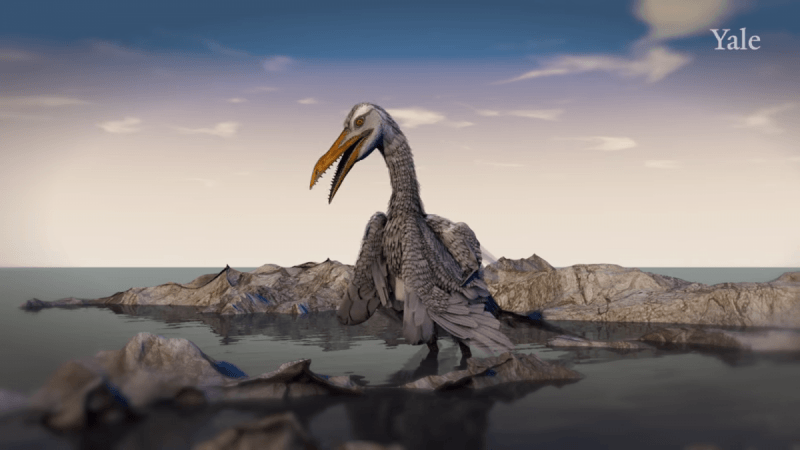
Terrifying dinosaurs like the velociraptor and T.rex are direct ancestors of modern day gulls, but how did fearsome predators with razor sharp teeth evolve into birds with beaks? Fossils of a stem bird –an evolving animal between dinosaur and bird– has taken paleontologists one step closer to the answer.
Stem birds are seen as a key link to understanding dinosaur evolution, notes a report on the study by NPR and the fossil of one of these creatures- Ichthyornis dispar was studied and it was found to provide some of the missing links in the transition between dinosaur and bird.
"Ichthyornis had the aspect of a seabird, like gull or a tern," says Bhart-Anjan Bhullar, from Yale University. It had large eyes and a long beak, he explained. The animal lived near what is now modern-day Kansas, at a time when Kansas had a seashore around 100 million and 66 million years back. The creature did, however, also have teeth and a jaw with enough muscles to effectively use those teeth, two things modern gulls don't.
"It was probably flying about, picking out morsels of fish and shellfish, grabbing them with its little pincer beak and then throwing them back into its strong, dinosaurian toothed jaws — crunching them a few times and then swallowing them," Bhullar says.
That combination of teeth, jaws, and beak make this creature an important link in this study, but there was never a full sample of it found, notes the report. The only fossils that were around for paleontologists were, "some crushed brain cases and some lower jaws and a few other fragmentary bits," said Bhullar. It wasn't until 2014 that scientists were able to obtain a whole fossil of the creature's head and skull.
Using a high-resolution CT scanner, the team was able to extract a 3D model of the skull that was embedded in chalk and rock. In essence, the team was able to completely extract all the information from the rock and then study it without having to manually remove the skull.
The researchers found two things: first- they realized that the Ichthyornis could move its beak like a modern bird- its upper beak independent of its head while holding the lower beak stable, and that modern birds had bigger brains than their velociraptor ancestors, making them a lot more intelligent.
"Bird brains are larger relative to their body size than is the case for reptiles, and the relative size of bird brains is comparable to that of placental mammals," paleontologist Kevin Padian of the University of California, Berkeley, says in response to the study published today in the journal Nature. "As birds evolved from their dinosaur ancestors, the bones that protect the brain enlarged to keep pace with the changes in brain size."
One of the hypotheses that explain this is that as birds began to fly, the extra processing that their brains needed to do required their skulls to make way for it.
The study was first published in the journal Nature.














